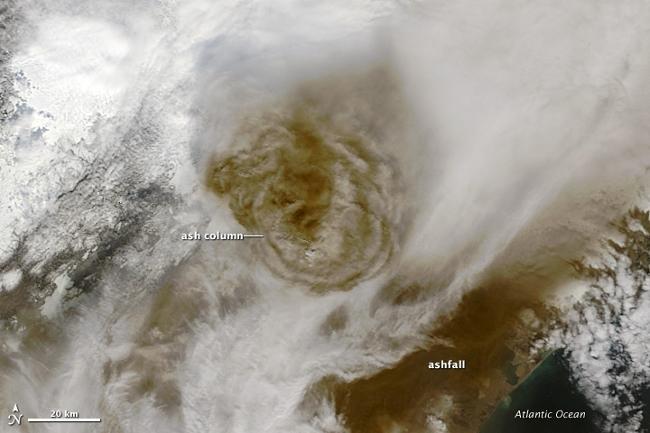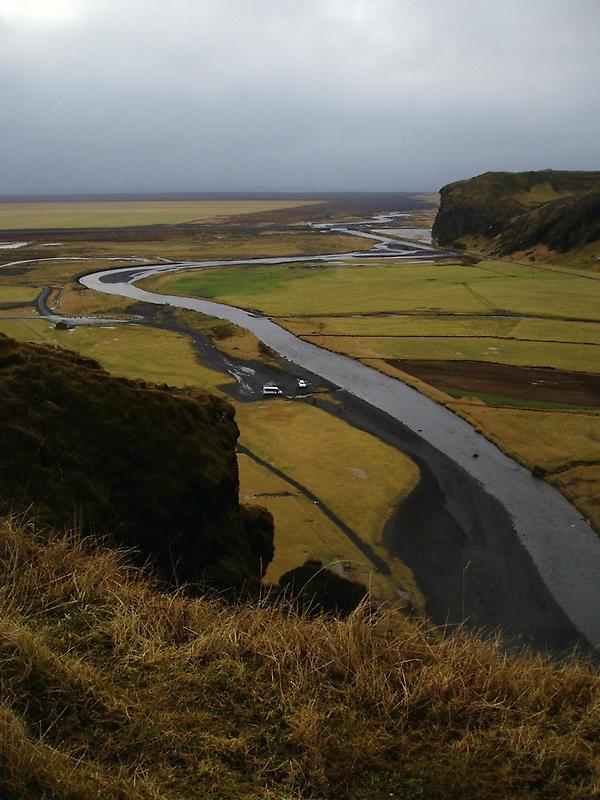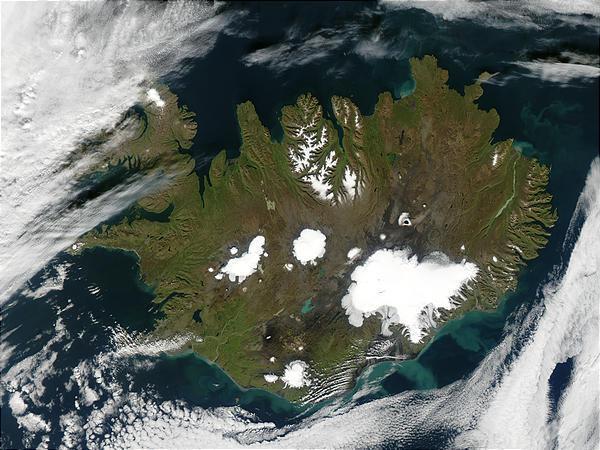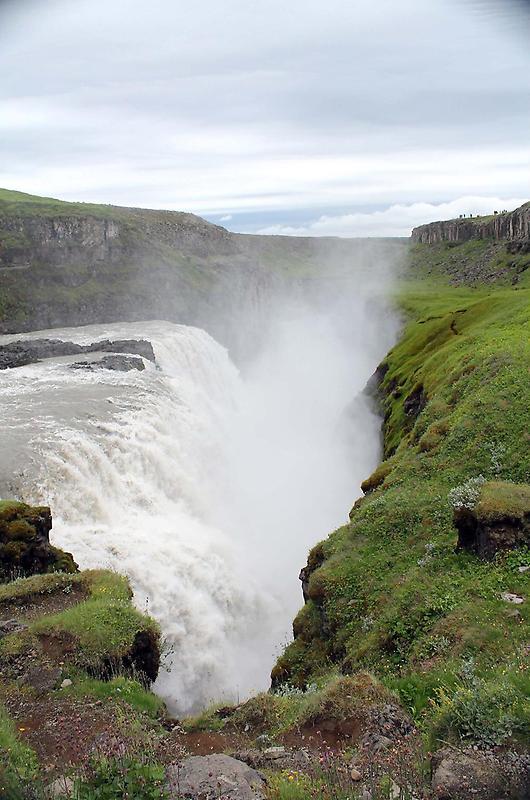Grimsvoetn volcano#

In the southeast, ash colored the snow surface dark brown. Ash from the volcano also reduced visibility to about 50 m (160 ft) in some areas, causing night-like darkness in the middle of the day.
Southern coast of Iceland#

A river with volcanic black sand banks meanders to the sea through farm fields near the southern coast of Iceland.
Iceland (2)#

The heat from these volcanoes causes the underside of the ice cap to melt, slowly filling the calderas. Eventually the caldera spills over and releases a torrent of water known as a glacial melt flood. This volcanic activity happens because a tectonic boundary runs roughly northeast-southwest through the island country, and the two plates are pulling away from each other, causing magma to well up from deep in the Earth.
The brightly colored lakes and coastal waters are the result of very fine, and highly reflective sediment that is ground to bits by the immense weight of the glaciers and washed out with glacial runoff.
Thundering waters of the Gullfoss Waterfall#

The thundering waters of the Gullfoss Waterfall.
More pictures of Iceland